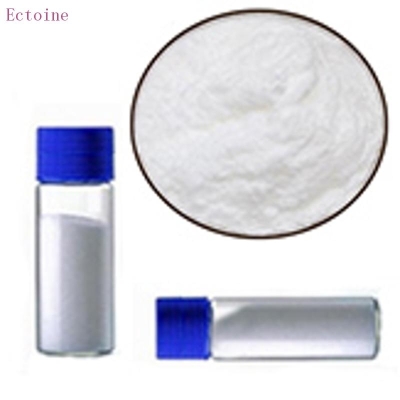-
Categories
-
Pharmaceutical Intermediates
-
Active Pharmaceutical Ingredients
-
Food Additives
- Industrial Coatings
- Agrochemicals
- Dyes and Pigments
- Surfactant
- Flavors and Fragrances
- Chemical Reagents
- Catalyst and Auxiliary
- Natural Products
- Inorganic Chemistry
-
Organic Chemistry
-
Biochemical Engineering
- Analytical Chemistry
- Cosmetic Ingredient
-
Pharmaceutical Intermediates
Promotion
ECHEMI Mall
Wholesale
Weekly Price
Exhibition
News
-
Trade Service
net/tag_2496.
html" class="zdbq" title="Price related food information" target="_blank">Price Index averaged 120.
9 points in April 2021, an increase of 2.
0 points (1.
7%) from the previous month and 28.
4 points (30.
8%) higher than the previous year.
This indicates that the food price index has risen for the 11th consecutive month, recording the highest level since May 2014.
The index climb in April was mainly driven by the strong rise in foodmate.
net/tag_1685.
html" class="zdbq" title="Sugar-related food information" target="_blank">sugar prices, followed by foodmate.
net/tag_2394.
html" class="zdbq" title="Vegetable oil related food information" target="_blank">vegetable oils , foodmate.
net/tag_1499.
html" class="zdbq" title="Meat related food information" target="_blank">meat , foodmate.
net/tag_1528.
html" class="zdbq" title="Dairy related food information" target="_blank">dairy products and foodmate.
net/tag_601.
html" class="zdbq" title="Cereal-related food information" target="_blank">grains .
The FAO Grain Price Index averaged 125.
1 points in April, an increase of 1.
5 points (1.
2%) from the previous month.
After a short-term recovery in March, it resumed its upward trend and was 25.
8 points (26.
0%) higher than the same period last year.
Lower-than-expected planting intentions in the United States, coupled with concerns about crop conditions in Argentina, Brazil, and the United States, have put upward pressure on prices and pushed corn prices up by 5.
7% in April.
Due to the overall tightening of corn supply and continued strong demand, corn prices have increased by 66.
7% from the same period last year and are still at the highest level since mid-2013.
Among other coarse grains, international barley and sorghum prices continued to weaken, falling 1.
2% and 1.
0% respectively in April, but they were still 26.
8% and 86.
5% higher than the same period last year.
International wheat prices were generally stable in April and continued to be more than 17% higher than the same period in 2020.
Although wheat quotations are supported by rising corn prices and the worrying crop conditions in several countries in the United States and Europe, better global production prospects have kept prices generally stable.
In contrast, international rice prices fell again in April, mainly reflecting currency trends and weak trade volume.
At the same time, long-term logistics restrictions and freight costs also continued to hinder new transactions.
1 points in April, an increase of 1.
5 points (1.
2%) from the previous month.
After a short-term recovery in March, it resumed its upward trend and was 25.
8 points (26.
0%) higher than the same period last year.
Lower-than-expected planting intentions in the United States, coupled with concerns about crop conditions in Argentina, Brazil, and the United States, have put upward pressure on prices and pushed corn prices up by 5.
7% in April.
Due to the overall tightening of corn supply and continued strong demand, corn prices have increased by 66.
7% from the same period last year and are still at the highest level since mid-2013.
Among other coarse grains, international barley and sorghum prices continued to weaken, falling 1.
2% and 1.
0% respectively in April, but they were still 26.
8% and 86.
5% higher than the same period last year.
International wheat prices were generally stable in April and continued to be more than 17% higher than the same period in 2020.
Although wheat quotations are supported by rising corn prices and the worrying crop conditions in several countries in the United States and Europe, better global production prospects have kept prices generally stable.
In contrast, international rice prices fell again in April, mainly reflecting currency trends and weak trade volume.
At the same time, long-term logistics restrictions and freight costs also continued to hinder new transactions.
The FAO Vegetable Oil Price Index averaged 162.
0 points in April, an increase of 2.
9 points (1.
8%) from the previous month.
This was due to the fact that the price increase of soybean oil, rapeseed oil and palm oil was enough to offset the downward impact of sunflower oil prices.
Concerns about lower-than-expected production growth in major exporting countries led to international palm oil prices continuing to climb in April.
Soybean oil and rapeseed oil prices have also risen further, respectively affected by strong global demand, including biodiesel producers, and continued tightening of global supply.
In contrast, the international price of sunflower oil fell moderately due to demand rationing.
0 points in April, an increase of 2.
9 points (1.
8%) from the previous month.
This was due to the fact that the price increase of soybean oil, rapeseed oil and palm oil was enough to offset the downward impact of sunflower oil prices.
Concerns about lower-than-expected production growth in major exporting countries led to international palm oil prices continuing to climb in April.
Soybean oil and rapeseed oil prices have also risen further, respectively affected by strong global demand, including biodiesel producers, and continued tightening of global supply.
In contrast, the international price of sunflower oil fell moderately due to demand rationing.
The FAO Dairy Price Index averaged 118.
9 points in April, an increase of 1.
4 points (1.
2%) from the previous month, and it increased for the 11th consecutive month while setting a year-on-year increase of 24.
1%.
Despite weak domestic demand in Europe, strong import demand in Asia still pushed up the price of butter in April.
Partly affected by concerns about possible delays in shipments due to limited spot supplies in Europe and Oceania, strong import demand in East Asia has led to an increase in the price of skimmed milk powder.
Cheese prices have also risen due to lower-than-expected production in Europe and reduced seasonal supply in Oceania, which has given rise to strong demand in Asia.
In contrast, the quotation of whole milk powder has declined slightly, reflecting the recent increase in trade volume, which has resulted in sufficient supply and weakened import demand.
9 points in April, an increase of 1.
4 points (1.
2%) from the previous month, and it increased for the 11th consecutive month while setting a year-on-year increase of 24.
1%.
Despite weak domestic demand in Europe, strong import demand in Asia still pushed up the price of butter in April.
Partly affected by concerns about possible delays in shipments due to limited spot supplies in Europe and Oceania, strong import demand in East Asia has led to an increase in the price of skimmed milk powder.
Cheese prices have also risen due to lower-than-expected production in Europe and reduced seasonal supply in Oceania, which has given rise to strong demand in Asia.
In contrast, the quotation of whole milk powder has declined slightly, reflecting the recent increase in trade volume, which has resulted in sufficient supply and weakened import demand.
The FAO Meat Price Index* averaged 101.
8 points in April, an increase of 1.
7 points (1.
7%) from the slightly revised figure in March, achieving the seventh consecutive month of month-on-month increase and a year-on-year increase of 5.
1%.
In April, continued herd rebuilding and low inventories led to tight supply in Oceania.
The resulting strong demand in East Asia pushed up the price of beef and lamb.
The increase in internal sales in some production areas has also supported the prices of beef and lamb.
The continued high purchases in East Asia have resulted in strong pork quotations.
Although the EU's overall shipments have increased, concerns about African swine fever have kept Germany out of the Chinese market.
Poultry meat prices remained stable during the same period, reflecting the overall balance of the global market.
8 points in April, an increase of 1.
7 points (1.
7%) from the slightly revised figure in March, achieving the seventh consecutive month of month-on-month increase and a year-on-year increase of 5.
1%.
In April, continued herd rebuilding and low inventories led to tight supply in Oceania.
The resulting strong demand in East Asia pushed up the price of beef and lamb.
The increase in internal sales in some production areas has also supported the prices of beef and lamb.
The continued high purchases in East Asia have resulted in strong pork quotations.
Although the EU's overall shipments have increased, concerns about African swine fever have kept Germany out of the Chinese market.
Poultry meat prices remained stable during the same period, reflecting the overall balance of the global market.
The FAO Sugar Price Index averaged 100.
0 points in April, an increase of 3.
8 points (3.
9%) from the previous month and nearly 60% higher than the same period last year.
The slow harvest in Brazil and the frost in France have intensified concerns about tighter global supplies in 2020/21.
Strong buying prompted a rebound in international sugar prices in April.
The appreciation of the Brazilian real against the U.
S.
dollar usually affects the exports of Brazil, the world's largest sugar exporter, and thus provides further support for the strengthening of sugar prices.
However, the upward pressure on prices has been restrained to a certain extent by the prospect of India's massive exports and the slight decline in crude oil prices.
0 points in April, an increase of 3.
8 points (3.
9%) from the previous month and nearly 60% higher than the same period last year.
The slow harvest in Brazil and the frost in France have intensified concerns about tighter global supplies in 2020/21.
Strong buying prompted a rebound in international sugar prices in April.
The appreciation of the Brazilian real against the U.
S.
dollar usually affects the exports of Brazil, the world's largest sugar exporter, and thus provides further support for the strengthening of sugar prices.
However, the upward pressure on prices has been restrained to a certain extent by the prospect of India's massive exports and the slight decline in crude oil prices.
* Unlike other commodity categories, when the FAO Food Price Index is calculated and released, most of the prices used to calculate the FAO Meat Price Index are still uncertain; therefore, the meat price index in recent months is a comprehensive forecast price And the actual price.
This sometimes requires significant adjustments to the FAO Meat Price Index to arrive at the final figure, which in turn may have an impact on the FAO Food Price Index.
This sometimes requires significant adjustments to the FAO Meat Price Index to arrive at the final figure, which in turn may have an impact on the FAO Food Price Index.







